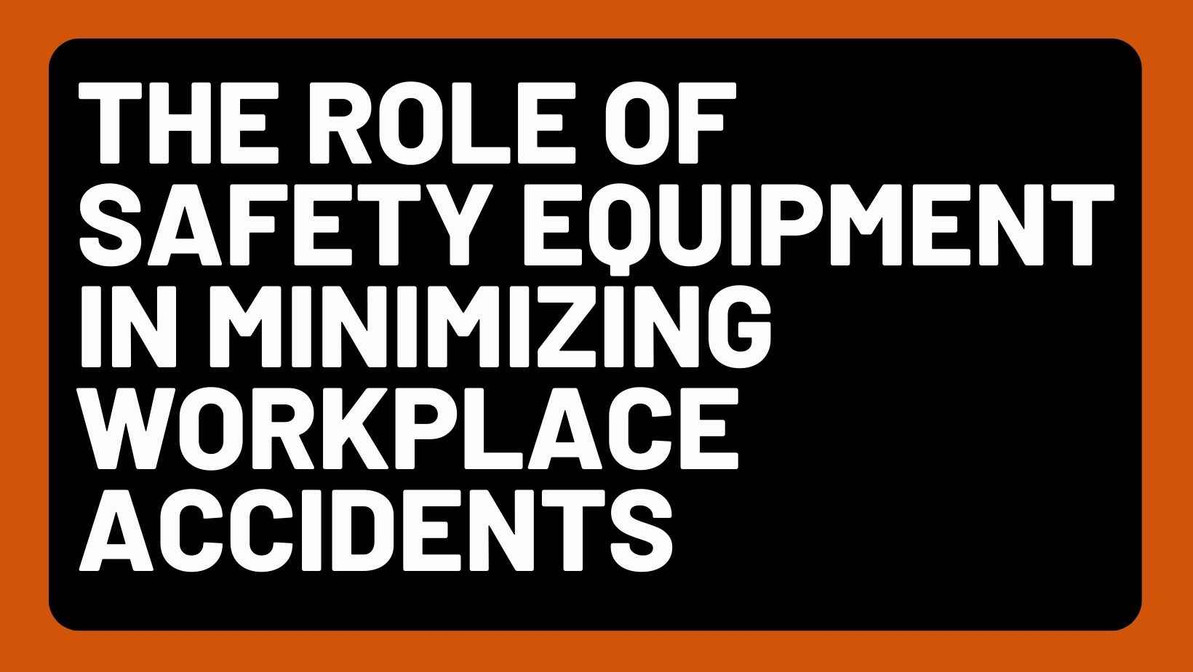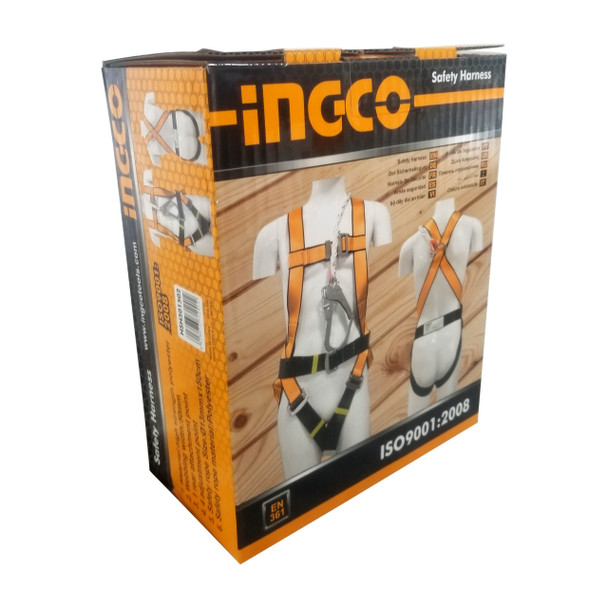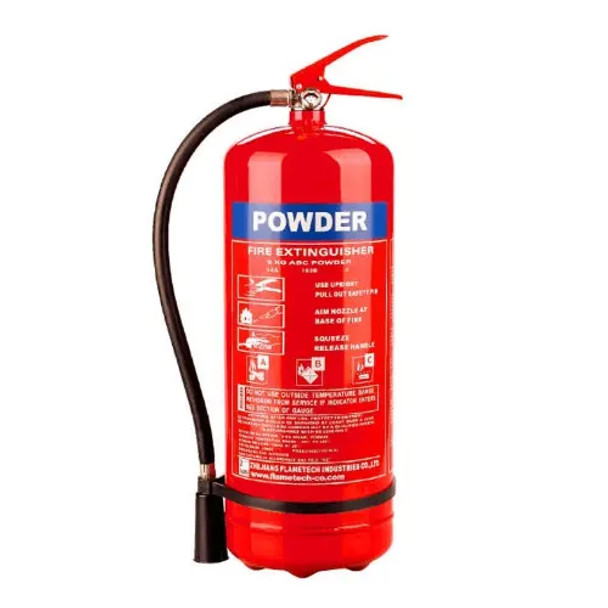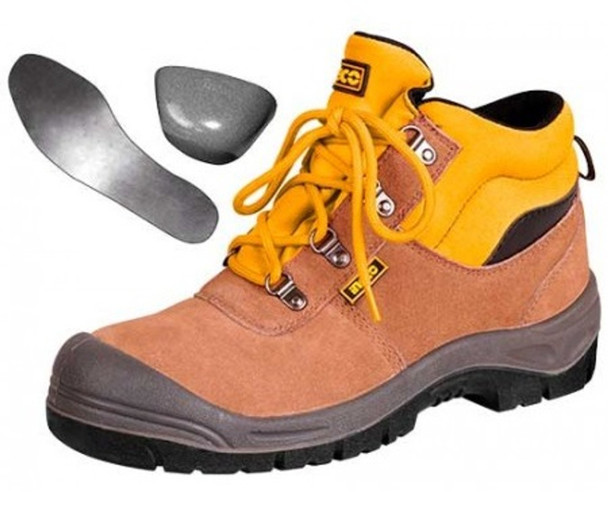The Role of Safety Equipment in Minimizing Workplace Accidents
Safety equipment plays a pivotal role in minimizing workplace accidents by providing essential protection and preventive measures. Personal protective equipment (PPE), such as helmets, safety glasses, Lanyards and gloves, acts as a frontline defense against physical and chemical hazards, reducing the risk of injuries. Machinery guards and safety barriers contribute to accident prevention by restricting access to potentially dangerous areas, ensuring workers' safety. Safety equipment and gears are designed to minimize risks, protect individuals from potential hazards, and create an environment where employees can perform their duties without compromising their safety.
Buy Online... Dust Mask with Breath Valve INGCO HDM02 (N95)
Additionally, the integration of advanced safety technologies, like sensors and alarms, enhances hazard detection, enabling swift responses to potential risks. Fire extinguishers and emergency response kits are vital components in mitigating the impact of unforeseen incidents. In essence, the strategic deployment and proper use of safety equipment create a defense system that significantly reduces the likelihood of workplace accidents, fostering a safer and more secure working environment.
How Safety Equipment Minimizes Workplace Accidents
Safety equipment plays a crucial role in minimizing workplace accidents by providing a barrier between the worker and potential hazards. The use of safety equipment is a proactive approach to prevent injuries and ensure that employees return home safely at the end of the workday.
Types of Safety Equipment
A. Personal Protective Equipment (PPE)
Personal Protective Equipment, commonly known as PPE, is the first line of defense against workplace accidents. It includes various items worn by workers to protect against specific hazards.
- Helmets: Helmets are essential for protecting the head from impacts, falling objects, and other potential head injuries. They are a must in construction sites and any workplace where there is a risk of head trauma.
- Safety Glasses: Safety glasses shield the eyes from flying debris, chemical splashes, and intense light sources. They are critical in manufacturing, laboratory work, and any environment where eye hazards are present.
- Gloves: Gloves protect the hands from a variety of dangers including cuts, burns, chemical exposure, and cold temperatures. Different types of gloves are designed for specific tasks, ensuring that workers have the right protection for the job at hand.
B. Machinery Guards and Safety Barriers
Machinery guards and safety barriers are physical protections installed on or around equipment to prevent contact with moving parts. They serve as a safeguard against accidents that can result from machine operation, such as entanglement, crushing, or amputation. These physical barriers act as a deterrent, preventing unauthorized access to dangerous zones or contact with moving parts. They are crucial in factories, warehouses, and industrial settings to ensure employee safety around machinery.
Buy Online... Ingco Safety Harness Full Body Protection Kit 50mm HSH501502
C. Advanced Safety Technologies
Advanced safety technologies encompass a range of devices and systems designed to enhance workplace safety. These include:
- Sensors: Utilizing various sensors like proximity sensors, motion detectors, and gas detectors, workplaces can easily identify potential dangers in real-time. These sensors trigger alerts or automatic shutdowns, mitigating risks before accidents occur.
- Alarms: Audible and visual alarms are crucial components of workplace safety, alerting workers to hazardous conditions or emergencies promptly. From fire alarms to gas leak detectors, these alarm systems provide essential warnings, allowing for swift evacuation or immediate action.
D. Fire Extinguishers and Emergency Response Kits
Fire extinguishers and emergency response kits are indispensable tools in mitigating the impact of fires, chemical spills, or medical emergencies. Properly placed and maintained fire extinguishers, coupled with accessible emergency response kits, empower employees to act swiftly in containing incidents before they escalate.
These safety equipment categories collectively form a comprehensive safety net, significantly reducing the occurrence and severity of workplace accidents across diverse industries. Integrating and regularly maintaining these safety measures are essential for fostering a secure work environment and safeguarding the well-being of employees.
Buy Online... Dry Chemical Powder Fire Extinguisher - dcp -9kg
Advantages of Safety Equipment
The implementation of safety equipment in the workplace is essential for safeguarding employees and ensuring the smooth operation of business activities. The benefits of such equipment are multifaceted, extending beyond the immediate protection of workers to the long-term sustainability of the workplace environment.
A. Protection Against Physical and Chemical Hazards
The primary function of safety equipment is to offer a robust defense against the myriad of physical and chemical hazards that workers may encounter. For instance:
- Personal Protective Equipment (PPE), such as helmets, safety glasses, and gloves, serves as a personal shield, effectively reducing the risk of injuries like fractures, lacerations, and burns. These items are tailored to counter specific threats, whether it be falling debris, sharp objects, or corrosive chemicals.
- Respiratory Protective Equipment (RPE) safeguards against inhalation of harmful dust, vapors, and gases, preventing respiratory illnesses and long-term health complications.
B. Restriction of Access to Dangerous Areas
Safety barriers, such as guardrails and fencing, along with clear signage, are critical in delineating hazardous zones within the workplace. These measures are not merely physical deterrents but also serve as constant visual reminders for workers to exercise caution, thereby significantly reducing the likelihood of accidental entry into areas where they could be exposed to serious harm. Minimizing the chances of accidents caused by human error or lack of awareness of potential risks.
C. Hazard Detection and Swift Response
Incorporating advanced safety technologies equipped with sensors and alarms enhances the workplace’s ability to preemptively identify potential dangers. These systems can detect a wide array of hazards, including:
- Gas detectors that can sense the presence of combustible or toxic gases and trigger evacuation protocols.
- Heat sensors that monitor temperature fluctuations, alerting to the risk of fire or equipment overheating.
The prompt activation of alarms allows for immediate action, be it the cessation of operations, evacuation, or other emergency responses, thereby curtailing the escalation of hazardous situations.
D. Mitigation of Unforeseen Incidents
Despite rigorous safety measures, unexpected incidents can still happen. In such events, the presence of safety equipment like fire extinguishers, spill containment kits, and emergency response kits becomes invaluable. These tools empower workers to respond decisively to contain and control incidents, minimizing damage and injury until professional emergency services can take over.
The strategic deployment of safety equipment is a testament to a company’s commitment to the well-being of its employees and the integrity of its operations. By investing in comprehensive safety measures, businesses not only protect their workforce but also enhance their reputation as responsible and ethical entities.
Buy Online... Safety Rain boot INGCO SSH092S1P
Importance in Minimizing Workplace Accidents
The concerted effort to minimize workplace accidents is of paramount importance, as it directly influences the health and safety of employees and the operational efficacy of a business.
A. Reduction of Injury Risks
The implementation of safety measures and equipment is instrumental in reducing the risks of injuries in the workplace. By identifying potential hazards and equipping employees with the necessary tools to protect themselves, businesses can significantly lower the incidence of workplace injuries. This not only benefits the employees by safeguarding their physical well-being but also aids the company by reducing the costs associated with workplace accidents, such as medical expenses, compensation, and potential legal fees.
B. Creation of a Safer Working Environment
Safety equipment plays a pivotal role in cultivating a culture of safety within the workplace. When safety measures are prioritized and readily accessible, they contribute to creating an environment where employees feel secure and valued. This commitment to safety fosters trust between employers and employees, encouraging compliance with safety protocols and procedures. Moreover, a safer working environment leads to increased employee morale, productivity, and retention rates. When workers feel protected and confident in their safety, they are more focused on their tasks and less worried about potential hazards, ultimately contributing to a more efficient and harmonious workplace. Furthermore, a reputation for safety can enhance a company’s image, making it an attractive place to work and do business with.
Buy Online... Safety Boot SSH02S1P 45 INGCO
Related Articles
Safety Tips for Handling Power Tools
Safety Equipment in Nigeria 2024 Reviews
Conclusion
In conclusion, safety equipment serves as the bedrock upon which a safer workplace is built. Throughout this article, we have explored the multifaceted role that safety equipment plays in protecting employees from a myriad of workplace hazards. From personal protective equipment (PPE) that guards against physical injuries to advanced safety technologies that preemptively detect dangers, these tools are indispensable in the quest to minimize workplace accidents.
The advantages of implementing safety equipment are clear: a reduction in injury risks, the creation of a safer working environment, and the mitigation of unforeseen incidents. By investing in the right equipment and ensuring its proper use through regular training, businesses can create an environment where safety is not just a priority but a core value.
Fostering a safer workplace is not a one-time effort but a continuous journey that requires the commitment of every individual within an organization. It is a collective endeavor that involves leadership support, employee involvement, and a culture that values the well-being of its workforce above all else.
As we move forward, let us remember that the safety of employees is not just a legal obligation but a moral one. By placing an unwavering emphasis on safety, we not only protect our most valuable asset but also contribute to the creation of a more ethical, responsible, and sustainable business world. Contact us today for more information.
Recent Posts
-
The Ultimate Guide to Coating Painting Services: Everything You Need to Know
Coating painting services have become increasingly popular in recent years due to their ability to e …May 03, 2024 -
Choosing the Right Welding Services for Your Construction Project in Nigeria
Selecting the right welding services involves evaluating their capability to handle the specific r …May 03, 2024 -
Understanding Metal Properties and Their Impact on Welding Success
Specific Metal Characteristics Matter: Each metal's unique properties such as thermal conductivity …Apr 30, 2024






